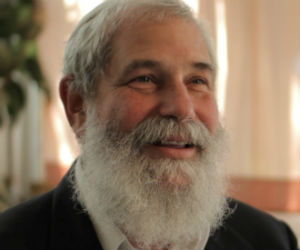Your cart is currently empty!

[BLOG] Dreams: Ancient and Modern Perspectives
Our sages teach that the Hebrew Bible (Torah, in Hebrew) has seventy faces; they liken the Torah to a crystal whose color and radiance alter with the slightest change of position. In addition to this teaching us that there are many perspectives to Torah and reality itself, it also communicates that the Torah has what to contribute to every aspect of life.
There is no field of human knowledge, no modern profession that cannot benefit from the timeless wisdom of the Torah; whether the environment, science, cosmology, music, psychology, medicine, political science, philosophy, literature, or law. This understanding flies in the face of those who consider the Bible and Jewish tradition outdated and completely lacking any contemporary relevance.
One area where the Torah has an enormous reservoir of wisdom to share is regarding dreams. Although many people attribute dream analysis to Sigmund Freud, the fact remains that despite his enormous contribution to the subject, the twenty-four books of the Bible are in fact full of incidents where dreams and their interpretations play a major role.
In the five books of Moses there are ten incidents where dreams play a significant role, as well as a number of occurrences where highly significant events take place during a state of “deep sleep.” Many of these are among the most famous and beloved of all Biblical “stories.” Dreams continued to play a major role in the lives of the judges, kings and prophets, and are recorded in the books of the Prophets and the Writings.
Sigmund Freud, who lived at the beginning of this past century, put great emphasis on the sexual nature and symbolism of dreams. Although Freud had discovered a certain level of truth regarding dream symbolism and the human psyche, his narrow view of dreams and the spiritual component in man are woefully limiting and incomplete. His greatest student Carl Jung, who believed strongly in the more spiritual aspects of the soul and its influence on dreams, broke away from Freud in order to develop a much fuller and holistic view of the origin and spiritual purpose of dreams.
Following the canonization of the Bible, the fascination and importance of dreams in Judaism was expressed throughout the Talmud and Midrash, the main sources of the oral tradition, as well as in Jewish law and the Kabbalah, the Jewish mystical tradition.
Although all the Biblical dreams are prophetic in nature, the Talmud presents a surprisingly broad understanding of the psychological factors that give rise to dreams.The sages recognized that prophetic dreams are actually, in fact, the exception, not the rule. Although we cannot, in a short venue such as this article, delve into the extensive parallels between Jewish sources relating to dreams and modern psychoanalytical theories, it should be noted that many, if not most modern opinions, can be seen quite clearly in Jewish tradition.
For example: one of the discussions in the Talmud includes a long and fascinating appraisal of the significance of seeing different objects, people, places, words or actions in a dream. The attempt to assign fixed meaning to the various images and figures of our symbolic dream-world interestingly plays a major part in modern dream analysis.
One deep insight about dreams is with regards to the mysterious connection between time and dreams. Who has not had the feeling of waking in the morning after a dream that seemed like days or years or lifetimes; or been in a dream whose scenes jump from image to image in lightning speed?
It is not just in the whimsical world of dreams or man’s subjective perspective that time is elastic. Despite the long held notion that the flow of time is constant under all circumstances, Albert Einstein proved that time in fact was not an absolute constant, but was instead relative. Another great discovery by Einstein was the intrinsic connection between time and space, something that until his time no one else seemed to intuit.
Yet we see that the key to the correct interpretation by Joseph of the dreams of the butler, baker and Pharaoh was his ability to translate the numbers of physical objects in their dreams to periods of time. He interpreted the three loaves of bread and three grape clusters in the butler and baker’s dreams to mean that in three days certain events would occur.
In Pharaoh’s dreams, he interpreted the seven healthy cows followed by seven sickly ones, and seven beautiful sheaves of grain and then seven withered ones, as seven years of plenty followed by seven years of famine. Only Joseph could see the intrinsic connection between time and space, a seemingly “modern” discovery.
There is an idea expressed by Rebbe Nachman of Breslov that the greater the intellect, the more that time is nullified for a given person. This can especially be applied to dreams which have their source in the subconscious, and at times, the superconscious. When we sleep, our usual level of cognizance makes way for the soul to free itself from the confines of both the body and ordinary intellect, thus opening us up to a higher perception of time and space.
Along with dreams alerting us to our fears, frustrations and deep seeded emotions, there are also those special dreams where the soul soars upwards to its Godly source and approaches revelation of its Divine mission. In “real” time these dreams can last a matter of minutes, but the impression they leave on the soul can last a lifetime. Our superconscious is rooted in a place above time and our dreams mirror this like a clear mountain lake reflects its pristine surroundings.
These insights and much more are found in my book The Mystical Meaning of Dreams.
The post [BLOG] Dreams: Ancient and Modern Perspectives appeared first on Breaking Israel News | Israel Latest News, Israel Prophecy News.
Source: Israel in the News

